Luxembourg City: compact capital brimming with art and history
Meet the locals over a beer or meet the family of man: it’s all waiting in one of Europe’s smallest capitals.
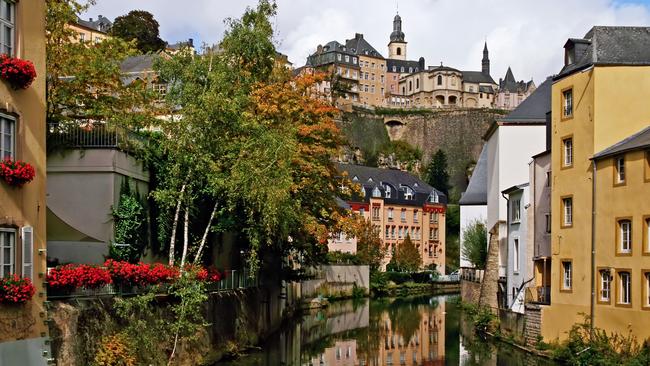
Meet the locals over a beer or meet the family of man: it’s all waiting in one of Europe’s smallest capitals.
1 Luxembourg City (capital of Luxembourg, a tiny nation surrounded by Belgium, France and Germany) is small and walkable, with a lift from Place Saint Esprit that connects the upper and lower cities. A walk along the ramparts offers stunning views over the Grund (lower city) while Casemates du Bock, a honeycomb of tunnels and galleries, is an underground alternative. These were carved out by the Spanish in the 17th century, expanded by the French, and then the Austrians. But most pleasant of all is to meander the peaceful, narrow streets of the Grund, a former working-class area. From the bottom of the lift, cross the bridge over River Alzette and stroll along narrow streets lined with pastel-coloured houses, cafes and galleries towards Neumunster Abbey, now a cultural centre.
2 Both the National Museum of History and Art (MNHA) and the Luxembourg City History Museum have galleries that descend into the rock on which the city stands. The highlight at MNHA is a large Roman mosaic, discovered in Vichten in 1995 and meticulously restored for display. Work by local artists include Harry Rabinger’s Luxembourg, showing its impressive cliff-edge position, and Michel Stoffel’s Passive Resistance (1942) referencing the city’s Nazi occupation. The modern glass facade of the Luxembourg City History Museum covers its four refurbished 17th to 19th-century houses. Wooden models recreate how the city would have looked at various times, and a huge circular panorama transports you into Marche aux Herbes of 1655.
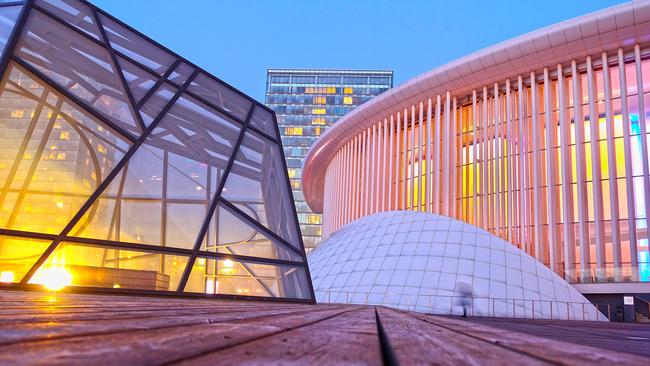
3 Place de l’Europe boasts the finest contemporary architecture in the city. MUDAM, the Grand Duke Jean Museum of Modern Art, constructed of white limestone with glass pyramids, is reminiscent of the Louvre’s pyramid in Paris, which is not surprising given MUDAM was designed by the same Chinese-American architect, IM Pei. There are few permanent collections on display as the focus is on temporary exhibitions. The most intriguing is a fountain that runs black ink. Irrespective of your interest in modern art, this light-filled building is worth a visit, along with the Philharmonie Luxembourg opposite. Designed by French architect Christian de Portzamparc, the hall resembles a giant white harp with slender Roman columns and hosts a lively program of classical, contemporary and world music.
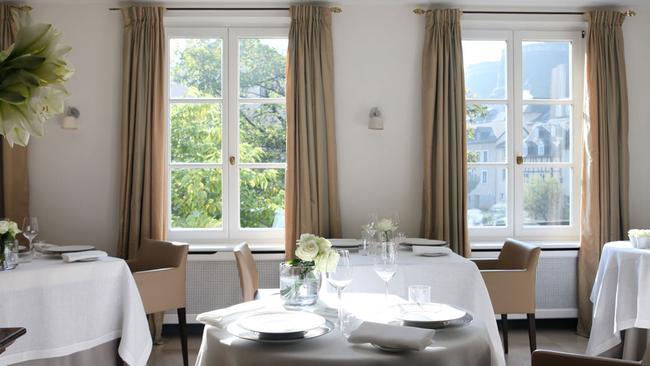
4 Luxembourg has one of the highest number of Michelin-starred restaurants per head of population. Mosconi, an Italian restaurant by the River Alzette, is a lovely place for a special night out although bookings are essential. A more affordable lunch menu is available at €44 ($68). Homemade pasta with white truffles is a favourite, as is the tuna ice cream. Brasserie Guillaume, on Place Guillaume II, is famous for its seafood; lobster and carpaccio are popular. The lunchtime dish of the day, at €12.90, is good value.
5 Searching out traditional Luxembourg food requires a little dedication, given the predominance of international restaurants. Typical dishes include judd mat gaardebounen (smoked collar of pork with stewed broad beans and potatoes sauteed in bacon), wainzossis (wine sausages) and the famous gromperekichelchen (potato cake). Sieweburen Hotel and Restaurant, on the edge of a forest just outside the city, serves all these plus a good selection of local wines. Namur, in the old city, established more than 150 years ago, has light meals and afternoon teas; try pate au riesling, a meat pie separated by wine jelly, and its Luxemburgerli macarons in assorted flavours.

6 Victor Hugo, whose summer house in Vianden is now a museum, wrote: “[The town], embedded in a splendid landscape, one day will be visited by tourists from the whole of Europe.” The spectacular hilltop setting of Vianden Castle — one of Europe’s most impressive, with a mixture of Romanesque, gothic and Renaissance architecture — is certainly a drawcard after its recent restoration. But the town of Vianden, by the River Our, is also worth exploring. The main road sweeps 500m up to the castle, punctuated halfway by a stunning gothic church, Eglise des Trinitaires. A chairlift from the town, with a cafe on the summit, takes visitors within a five-minute walk of the castle. The train to Ettelbruck and then bus 570 take less than an hour.
7 The winegrowing area along the River Moselle is one of Luxembourg’s best-kept secrets. Few of the wines are exported and most are available in the city’s restaurants and bars. Rivaner and eibling used to dominate but riesling, auxerrois, gewurztraminer, pinot noir and pinot blanc have become popular too. Perhaps most notable are the cremants, Luxembourg’s rival to French Champagne but at half the price. Drive to Cep D’Or, a family-run winery with a terrace overlooking the Moselle and try the 2015 auxerrois and the gewurztraminer. Or hire a bike between Schengen and Wasserbillig, stopping off at wineries along the way. In the city, head to Vins Fins in the Grund to taste organic and biodynamic wines.
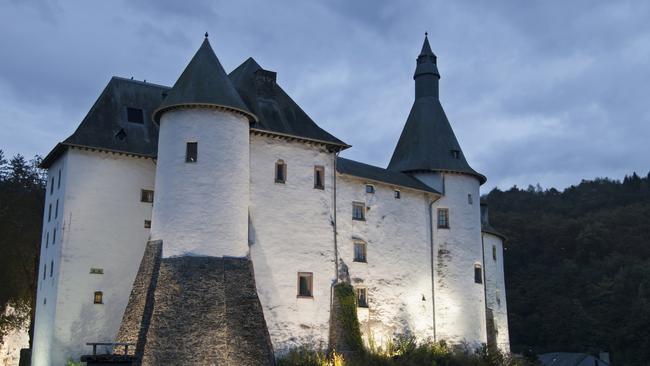
8 The splendid 12th-century castle at Clervaux, restored after a Nazi bombardment in 1944, houses the exhibition The Family of Man. Luxembourg-born photographer Edward Steichen, then director of photography at MOMA in New York, curated the exhibition as a manifesto for peace after World War II. More than 500 images from 68 countries, by famous and unknown photographers, were toured worldwide, attracting about nine million viewers. They represent birth, death and all stages in between, with quotes underlining a common humanity. From Mongolia to Massachusetts, Bucharest to Bengal, find images of couples courting in a sand pit; Jews fleeing persecution; nuns on a merry-go-round; Indian parents grieving a dead child. The collection was left to Luxembourg by Steichen in his will and in 2003 was classified by UNESCO as a Memory of the World. A 50-minute train journey takes you to Clervaux along the Luxembourg-Liege line.
9 Cafe des Artistes is an intimate, authentic coffee house in the Grund with theatre and concert posters covering the red-painted walls and ceiling. From Wednesday to Saturday, sing along by candlelight as the pianist plays Luxembourg and French folk classics. It’s a great way to meet the locals over a beer. For a different atmosphere, head to Paname, popular with young professionals, for superb cocktails with quirky names such as Purple Rain or Son of a Beach. Tasty, inventive bar food is served at Paname from 8am until late; for a morning-after reviver, order the hangover tea.
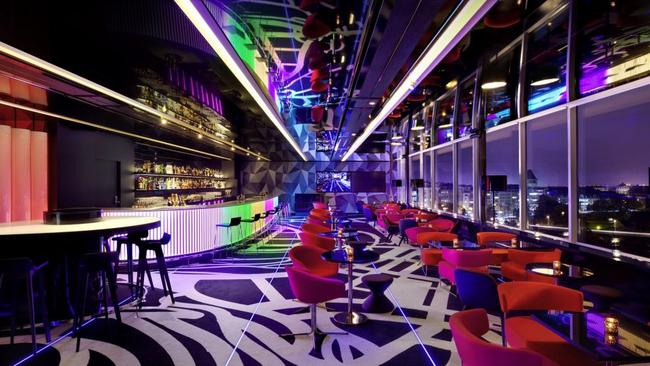
10 BEST BEDS
Sofitel Luxembourg Le Grand Ducal is a luxurious five-star hotel with a fantastic view over the Alzette and Petrusse valleys. Drink Bernard Massard cremant in the stylish bar (pictured) on the eighth floor and pick out landmarks in the historic city below, such as the spires of Notre Dame Cathedral, the ramparts, sheer cliffs of the Bock, meandering river and narrow streets of the Grund. Or try Hotel Francais, an attractive three-star, family-run hotel in the centre of the old town with smart and spotless accommodation in crisp and modern style; guestrooms at the front overlook the charming Place d’Armes, lined with Parisian-style pavement cafes.

To join the conversation, please log in. Don't have an account? Register
Join the conversation, you are commenting as Logout